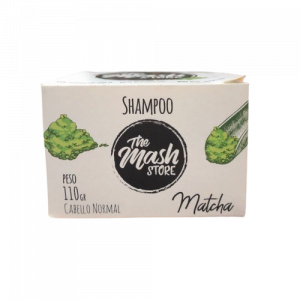The Mash Store Shampoo sólido matcha
9.3

Ingredientes
Sodium Cocoyl Isethionate
Ingrediente generalmente considerado seguro para su uso en productos de Belleza y Cuidado Personal.
water
Ingrediente generalmente considerado seguro para su uso en productos de Belleza y Cuidado Personal.
Macadamia Integrifolia/Tetraphylla Seed Oil
Ingrediente generalmente considerado seguro para su uso en productos de Belleza y Cuidado Personal.
Butyrospermum Parkii Butter/ Shea Butter
Ingrediente generalmente considerado seguro para su uso en productos de Belleza y Cuidado Personal.
Inulin
Ingrediente generalmente considerado seguro para su uso en productos de Belleza y Cuidado Personal.
Equisetum arvense extract
Ingrediente generalmente considerado seguro para su uso en productos de Belleza y Cuidado Personal.
camellia sinensis leaf extract
Ingrediente generalmente considerado seguro para su uso en productos de Belleza y Cuidado Personal.
Fragrance
El contacto directo con ciertas fragancias o aromas sintétocos inespecíficos puede ocasionar alergias, irritar o sensibilizar la piel.
Citric acid
Ingrediente generalmente considerado seguro para su uso en productos de Belleza y Cuidado Personal, en las condiciones actuales de concentración y prácticas de uso.
PHENOXYETHANOL
Existen restricciones en cuanto a la concentración máxima permitida y el tipo de formulaciones en los que puede utilizarse este ingrediente.
ethylhexylglycerin
Ingrediente clasificado como irritante para los ojos y la piel, peligroso para la vida acuática y potencialmente cancerígeno.
Más información
El análisis de ingredientes ha sido elaborado por investigadores del CONICET (*) en base a las siguientes referencias bibliográficas:
- NLM (National Library of Medicine). 2012. PubMed online scientific bibliography data. http://www.pubmed.gov.
- SCCNFP (The Scientific Committee on Cosmetic Products and Non-Food Products Intended for Consumers) 1999. Opinion concerning fragrance allergy in consumers. A review of the problem. Analysis of the need for appropriate consumer information and identification of consumer allergens. SCCNFP/0017/98 Final. December 199 - Tatyana Hamilton and Gillian C de Gannes. 2011. Allergic contact dermatitis to preservatives and fragrances in cosmetics. Skin therapy letter 16(4), 1-4 .- Anne Birgitte Simonsen, Mette Deleuran, Jeanne Duus Johansen and Mette Sommerlund 2011. Contact allergy and allergic contact dermatitis in children - a review of current data. Contact dermatitis 65(5), 254-65.
- CIR (Cosmetic Ingredient Review). CIR Compendium, containing abstracts, discussions, and conclusions of CIR cosmetic ingredient safety assessments (Washington DC, 2006).
- US - FOOD & DRUG Administration (FDA). Generally Recognized as Safe (GRAS) Substances (SCOGS) Database (SCOGS Number 84,1977. Conclusion 1)
- Material Safety Data Sheet MSDS# 96171
- Chasset, F., Soria, A., Moguelet, P., Mathian, A., Auger, Y., François, C., and Barete, S. (2015). Contact dermatitis due to ultrasound gel: A case report and published work review. The Journal of dermatology.
- Bohn, S., and Bircher, A. J. (2001). Phenoxyethanol induced urticaria. Allergy, 56(9), 922-923.
- European Commission Legislation (Regulation (EC) N° 1223/2009 y 2019/831, Annexes I to VI and all the amendments to the cosmetics regulation).
- List of Safe and/or Natural Ingredients
- Aerts, Olivier
- Verhulst, Lien
- Goossens, An (May 2016). Ethylhexylglycerin: a low-risk, but highly relevant, sensitizer in 'hypo-allergenic' cosmetics. Contact Dermatitis. 74 (5): 281–288.
(*) Según el ranking SCImago 2020, el CONICET alcanza la segunda posición entre las instituciones académicas y de investigación más prestigiosas de América Latina. A nivel mundial, ocupa la posición 230 entre 7000 instituciones privadas y gubernamentales.

